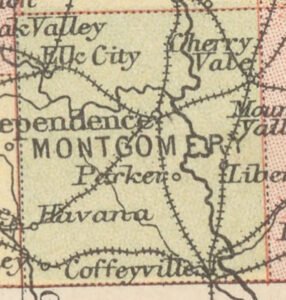Early History of Parker
This historical account details the rapid establishment and early social dynamics of Parker, Kansas, founded in 1869 by James W. Parker for both personal health and business opportunities. Despite its initial sparse settlement, Parker quickly transformed into a thriving commercial center, attracting settlers and businesses due to the founder’s reputation and a large initial investment in a general store. The narrative also explores the community’s character, highlighting a focus on order and cooperation rather than typical “wild west” lawlessness, even amidst conflicts and a fierce rivalry with the nearby town of Coffeyville.




